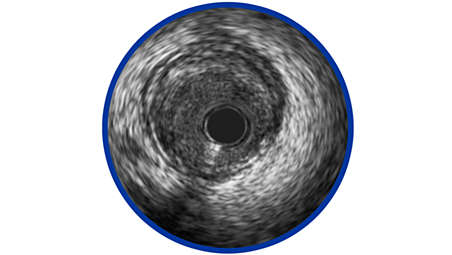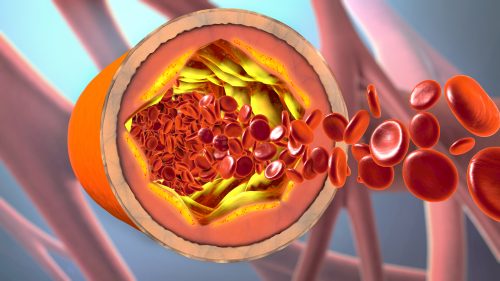The detection of lipid-rich plaques by intravascular near-infrared spectroscopy (NIRS) with intravascular ultrasound (IVUS) was associated the development of major adverse cardiovascular events (MACE), new results from the Lipid-Rich Plaque (LRP) Study suggest.
The 44-center study included 1,563 patients with suspected coronary artery disease and underwent cardiac catheterization with percutaneous coronary intervention (PCI) for an index event. Patient-level and plaque-level events were detected, with NIRS-IVUS performed in two or more arteries. All patients with at least one maxLCBI4mm segment ≥250 and a randomly selected 50% of patients with all maxLCBI4mm segments <250 were followed.
According to the results of the patient-level analysis, there was an 18% increased risk of experiencing non-culprit MACE event within 2 years with each 100-unit increase in maxLCBI4mm. The researchers also reported that patients with maxLCBI4mm ≥400 had a MACE rate of 12.6% versus 6.3% in patients with maxLCBI4mm <400 .The vulnerable plaque analysis showed a 45% increase in the risk for experiencing an event in a coronary segment for every 100-unit increase in maxLCBI4mm; the MACE rate was higher with maxLCBI4mm ≥400 compared to maxLCBI4mm <400 (3.7% vs. 0.8% respectively).
“Multi-vessel NIRS can be easily and safely performed to assess and identify vulnerable patients and vulnerable plaques,” said Ron Waksman, MD, associate director of the Division of Cardiology at MedStar Heart Institute in Washington, D.C., said in a press release. “Intravascular NIRS imaging in mildly or non-obstructive coronary arteries can be used as a tool to identify both patients and non-culprit arteries at high risk for future events and should be considered for use in patients undergoing cardiac catheterization with possible PCI.”
Source: Presentation given at TCT 2018, September 24. San Diego, CA.







 © 2025 Mashup Media, LLC, a Formedics Property. All Rights Reserved.
© 2025 Mashup Media, LLC, a Formedics Property. All Rights Reserved.